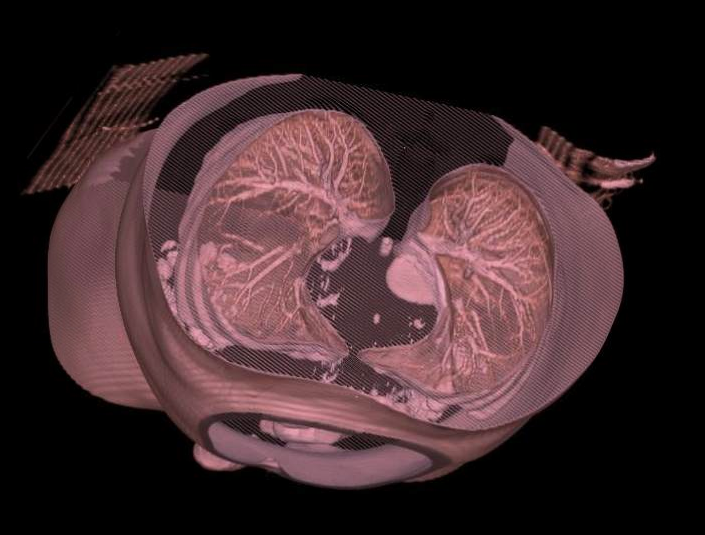
May 28, 2013 — Physicians have more information to share with their patients about the benefits and risks of low-dose computed tomography (LDCT) lung cancer screening following publication in the New England Journal of Medicine of the results of the first (of three planned) annual screening examinations from the National Lung Screening Trial (NLST).
“For a cancer screening to work, it’s important to verify that it can in fact discover cancers early. The analysis of NLST participants’ initial annual screening examination provides evidence that the number of early-stage cancers detected in the trial’s CT arm were significantly greater than the number detected in the chest X-ray arm,” says Timothy Church, Ph.D., a biostatistician and professor in the School of Public Health at the University of Minnesota, who has been involved with the NLST’s design, implementation and analysis. Church also says that a reduction in mortality is the ultimate indicator of a successful cancer screening strategy.
The NLST is a large-scale, longitudinal clinical trial that randomized more than 53,400 study participants equally into either the LDCT or standard chest X-ray (CXR) arm to evaluate whether lung cancer screening saves lives. Published results reported a 20 percent reduction in lung cancer deaths among study participants (all at high risk for the disease) screened with LDCT versus those screened with CXR.
The authors report that the NLST initial screening results are reflective of other large trials with regard to positive LDCT versus CXR results, with more positive screening exams (7,191 versus 2,387, respectively), more diagnostic procedures (6,369 versus 2,176, respectively), more biopsies and other invasive procedures (297 versus 121, respectively), and more lung cancers seen in the LDCT arm than in the CXR arm during the first screening round of NLST (292 versus 190, respectively). Although these results were generally anticipated, a key reason to publish the data was to document the exact differences between the two arms.
“Although we did see that CT resulted in referring more patients for additional testing, the question comes down to whether the 20 percent reduction in mortality is worth the additional morbidity introduced by screening high-risk patients,” said Church. He notes that although there were more follow-up procedures in the LDCT versus the CXR arm, it was encouraging to confirm that the number of individuals who actually had a more invasive follow-up procedure was quite small.
Another result reported is the high rate of compliance in performing the LDCT examination as specified in the research protocol across the 33 imaging facilities that carried out the study. “The sites complied with the low-dose CT imaging protocol specifications in 98.5 percent of all studies performed, which is outstanding considering the many thousands of scans performed," said Denise R. Aberle, M.D., the national principal investigator for NLST ACRIN and site co-principal investigator for the UCLA NLST team. Aberle said the first-screen result strongly suggests that CT lung cancer screening programs, with radiologists who possess similar expertise and interpret similar numbers of CT cases that are obtained on scanners of the same caliber or better as those required for the NLST, are likely to have results similar to those reported in the paper.
“What we’ve learned from the analysis of the first-screen results provides clinicians additional facts to discuss with patients who share similar characteristics as the NLST participants (current or former heavy smokers over the age of 55),” said Church. “The results also caution against making blanket lung cancer screening recommendations, because each person’s trade-off between the risk of having an unnecessary procedure and the fear of dying of lung cancer is uniquely individual.”
For more information: www.ecog-acrin.org, www.acrin.org


 August 09, 2024
August 09, 2024 








